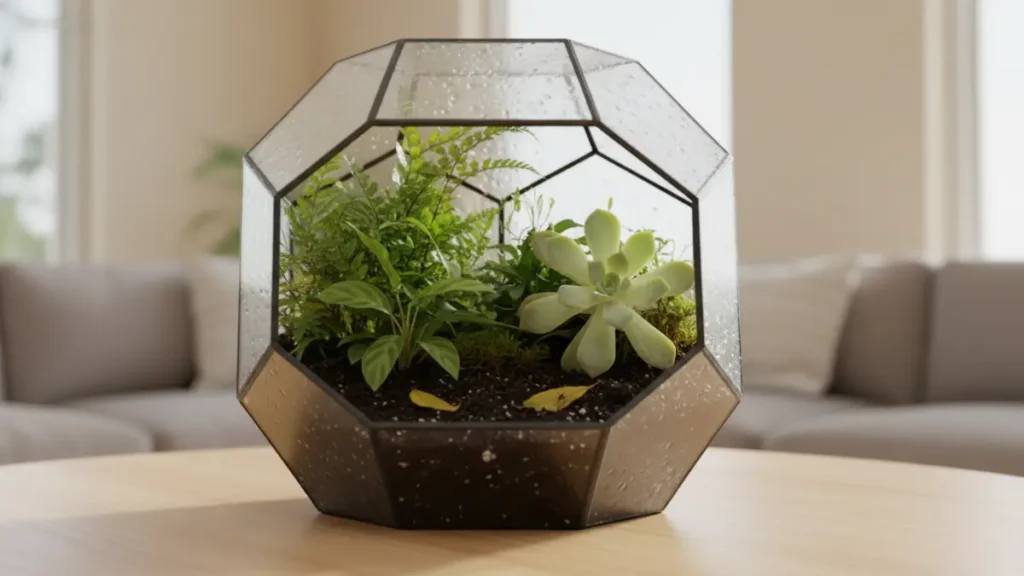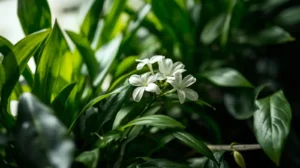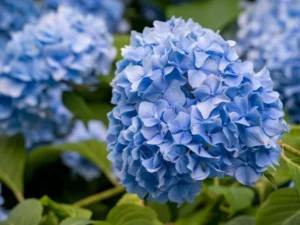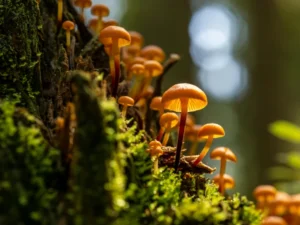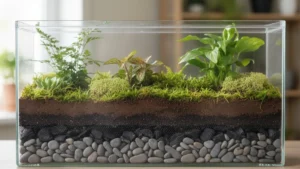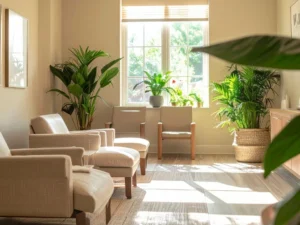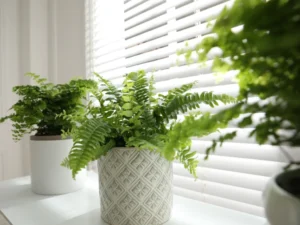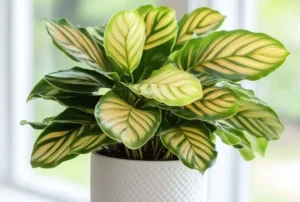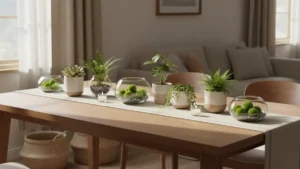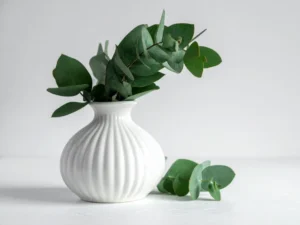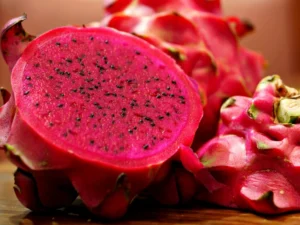Terrarium mistakes often happen even when someone genuinely wants to build a calm, healthy little ecosystem, especially when humidity, microclimates, and plant pairing come into play. Because many beginners struggle with overwatering, poor drainage, and choosing the wrong plants, their terrariums quickly develop mold or stubborn root rot. Yet, with the right guidance, these issues are easy to avoid, and your terrarium can thrive beautifully.
However, understanding how factors like condensation, activated charcoal, and proper ventilation work will completely change how your terrarium behaves. So, as you learn to manage moisture, improve soil layers, and avoid over-fertilizing, you’ll notice your terrarium staying healthier, more stable, and effortlessly vibrant for much longer.
10 Common Terrarium Mistakes Beginners Make: How to Fix Them
Building a terrarium seems simple, but one small terrarium mistake can quickly disrupt its natural balance. Because these tiny ecosystems depend on harmony, avoiding common mistakes helps them thrive effortlessly.
1. Overwatering the Terrarium
Many beginners assume terrariums need frequent watering, but this often causes root rot and decay.
Since terrariums recycle moisture naturally, adding more water too soon disrupts the humidity balance.
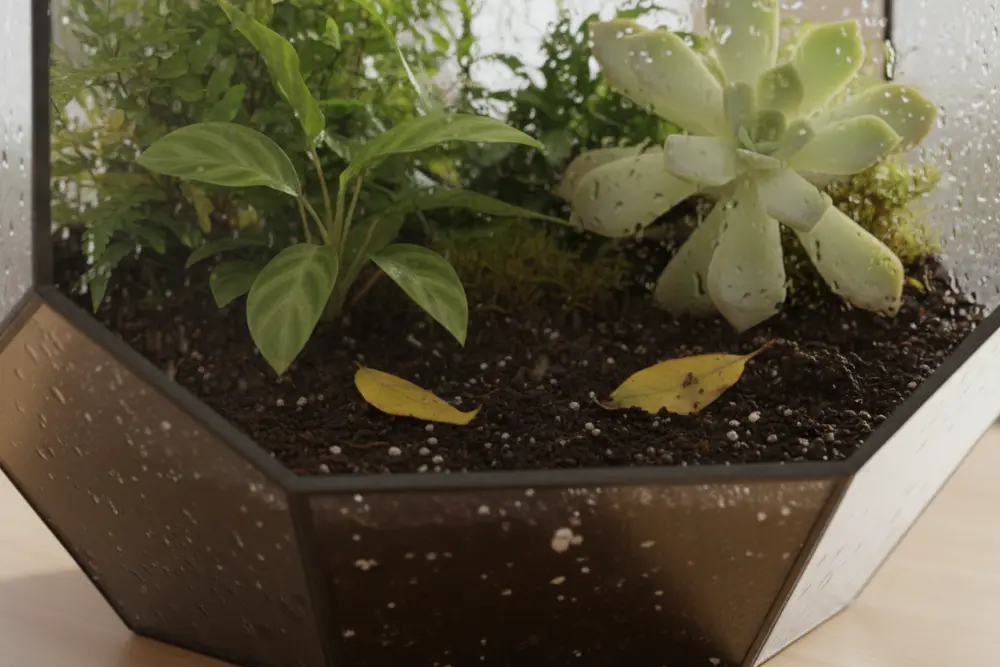
Why Overwatering Happens
Overwatering usually happens when the topsoil looks dry and beginners think plants need more water. However, moisture remains trapped inside the container, even when the surface looks dehydrated. As a result, roots sit in excess water and eventually suffocate due to poor oxygen levels.
How to Fix Overwatering
To fix overwatering, start by opening the terrarium lid to release trapped humidity naturally. Additionally, soak up standing water at the bottom using a paper towel if conditions are too wet. Afterward, water only when the soil feels barely damp, allowing your plants to recover gradually.
2. Choosing the Wrong Plants
Terrariums thrive when plants share similar humidity and lighting needs, making compatibility essential. However, mixing plants with opposite environmental preferences causes stress and poor long-term growth.
Why Plant Choice Matters
Different species require unique conditions, and terrariums can’t meet conflicting requirements at once. For example, moisture-loving moss thrives in humidity, but succulents need dry, airy environments. Therefore, choosing compatible plants ensures healthy growth and long-lasting terrarium stability.
Best Terrarium-Compatible Plants
Fittonia, pilea, moss, peperomia, and ferns naturally adapt to humid, low-light terrarium conditions.
These plants remain compact, making them ideal for small enclosed environments with limited airflow. Moreover, they grow steadily without frequent intervention, keeping the terrarium easy to maintain.
3. Poor Drainage Setup
Terrariums without drainage quickly develop root rot, mold, and stagnant water issues. Since enclosed containers trap moisture, a proper foundation is essential for plant survival.
Why Drainage Layers Are Important
Drainage layers keep roots from sitting in excess water by allowing moisture to settle below. This separation prevents rot and maintains better airflow around the root zone for healthier growth. Consequently, plants experience fewer water-related problems and remain stable long term.
How to Build a Proper Drainage Layer
Begin with pebbles or LECA to create space where extra moisture can safely collect. Next, add a thin charcoal layer to filter impurities and reduce odors inside the terrarium. Finally, place your soil mix on top to complete a healthy, well-balanced foundation.
4. Terrarium Mistakes Related to Soil Health
Garden soil may seem convenient, but it often carries pests and harmful microorganisms. Additionally, it becomes compact in humid environments, limiting airflow and proper root growth.
Why Garden Soil Fails in Terrariums
Outdoor soil traps too much moisture, causing dense, heavy conditions unsuitable for terrariums. As the soil compacts, plant roots struggle to breathe and absorb nutrients effectively. Eventually, the lack of oxygen leads to stunted growth, yellow leaves, and potential decay.
Best Soil Mix for Terrariums
Choose light, airy soil blends made from coco coir, peat moss, perlite, or orchid bark. These materials improve drainage, allowing roots to stay healthier in humid environments. Moreover, they prevent excessive compaction, which keeps your terrarium stable over time.
5. Terrarium Mistakes That Affect Light and Placement
Direct sunlight overheats terrariums and creates a harsh greenhouse effect inside the glass. Even though plants need light, too much heat causes stress, wilting, and rapid moisture loss.
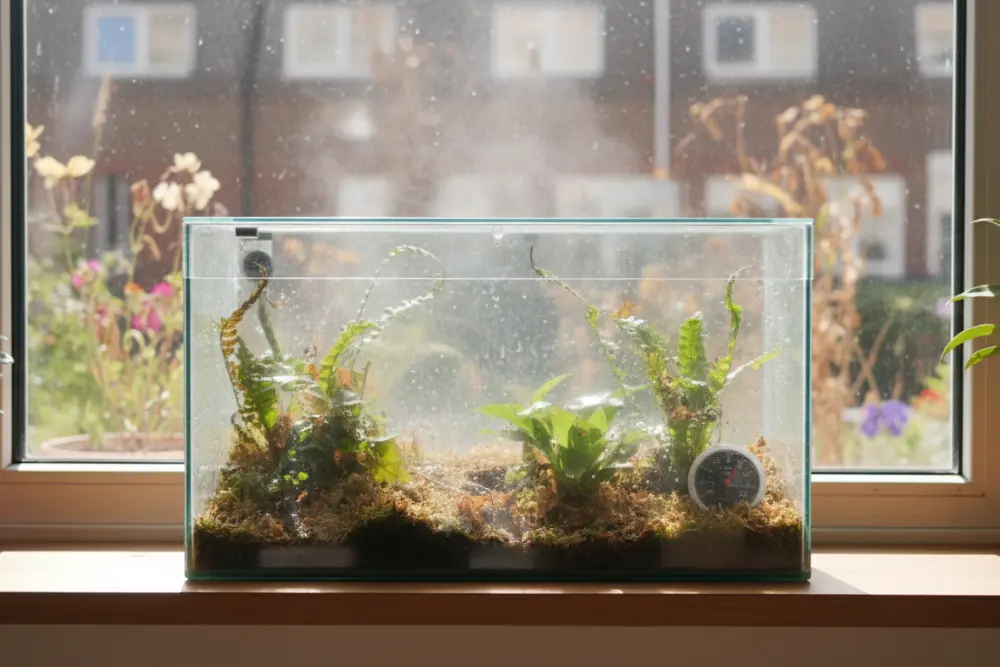
Why Direct Light Is Harmful
Glass magnifies sunlight, making temperatures rise faster than plants can tolerate safely. This sudden heat buildup dries out soil layers and pushes the terrarium beyond healthy limits. Therefore, placing it in direct sun leads to browning leaves and inconsistent growth.
Best Lighting Placement
Keep your terrarium near bright, indirect light such as an east-facing window for balance. Artificial grow lights also work well when positioned at a safe distance above the container. This approach ensures consistent brightness without overheating or stressing your plants.
6. Terrarium Mistakes That Disrupt the Natural Airflow
Terrariums with stagnant air quickly develop mold, odor, and excess moisture issues. Although they are enclosed ecosystems, they still need occasional ventilation to remain healthy.
Why Air Exchange Matters
Proper airflow prevents humidity from settling and reduces the risk of fungal growth. Because moisture continuously cycles inside the glass, fresh air maintains environmental balance. This simple step keeps the terrarium cleaner, clearer, and much more resilient over time.
Simple Ways to Improve Airflow
Open the lid every few days for short intervals to let trapped moisture escape. Remove fallen leaves promptly since decaying material increases mold risks in closed spaces. Additionally, wipe condensation when needed to maintain a cleaner and more stable environment.
7. Adding Too Many Plants
While a full terrarium looks attractive, overcrowding disrupts airflow and plant growth. Furthermore, tightly packed plants compete for space, moisture, and essential nutrients.
Why Overcrowding Is a Problem
Plants naturally expand, even in small ecosystems, and cramped conditions hinder their growth. That overcrowding traps humidity and limits air movement, increasing mold risks significantly. Over time, plants become stressed, leading to uneven growth and poor overall health.
How to Space Plants Properly
Use only a few compact species and leave open gaps between each plant for airflow. This spacing encourages healthier root development and improves long-term terrarium stability. Additionally, it creates a cleaner visual layout that highlights every plant beautifully.
8. Neglecting Regular Maintenance
Terrariums are low-maintenance, but small issues can snowball when ignored for too long. Because humidity, debris, and growth change over time, consistent upkeep keeps them thriving.
Why Maintenance Is Necessary
Terrariums may self-regulate, but they still rely on small interventions to stay balanced. Without maintenance, fallen leaves, dust, and moisture buildup disturb the internal ecosystem. As a result, plants lose vigor and mold begins forming on soil and glass surfaces.
Easy Maintenance Tasks
Inspect your terrarium weekly to remove debris, trim overgrown leaves, and clear the glass. Monitor humidity levels to ensure the environment stays healthy for your chosen plants. Regular light upkeep keeps your terrarium looking fresh, vibrant, and long-lasting.
9. Using the Wrong Container Type and Decorative items
The container determines how much humidity and airflow your terrarium will hold over time. Choosing the wrong one leads to stress, mold growth, or dehydrated plants depending on style.
Why Container Choice Impacts Growth
Closed containers trap moisture, while open designs allow more airflow for sensitive plants. When container type doesn’t match plant needs, humidity levels become unbalanced inside. Therefore, pairing plants with suitable containers prevents long-term environmental stress.
Best Containers for Terrariums
Clear glass containers with wide openings suit plants that prefer moderate airflow. Meanwhile, sealed or partially closed vessels work best for humidity-loving species like moss. Selecting the right shape and lid style ensures stability and consistent plant health.
Adding Decorative Items That Interfere With Plant Health
Decorative items look charming, but some materials trap moisture or interrupt soil breathing inside the terrarium. Even though accessories add style, they should never disrupt drainage, airflow, or root expansion.
So, choosing breathable, non-toxic materials ensures long-term plant stability and a cleaner environment.
10. Terrarium Mistakes: Forgetting Activated Charcoal
Activated charcoal may seem optional, but it is vital for odor control and freshness. Since terrariums trap moisture, charcoal helps maintain a cleaner and healthier ecosystem.
Why Charcoal Is Essential
Charcoal absorbs impurities and reduces harmful bacteria that form in humid environments. It also prevents unpleasant odors by filtering trapped moisture as the terrarium cycles. Because of this, charcoal significantly improves long-term terrarium performance.
How to Use Charcoal Correctly
Add a thin charcoal layer between your drainage base and soil for balanced filtration. This simple step keeps water cleaner and reduces the risk of mold forming over time. Even though it’s small, this addition creates a more stable and low-maintenance terrarium. For more indoor plant care tips, check out this guide on rubber plant leaves falling off (https://peeacelily.com/rubber-plant-leaves-falling-off/).
Conclusion on Terrarium Mistakes
Terrarium mistakes may seem small at first, yet they can quickly shift the entire microclimate and influence plant health over time. Even though issues like overwatering, poor drainage, heavy condensation, and root rot are common, they’re simple to fix with the right care.
So, by choosing compatible plants, improving airflow, and avoiding over-fertilizing, you can maintain a terrarium that thrives naturally. If you enjoy learning about individual plant needs, you might also find this guide on Philodendron Selloum care helpful for growing healthier indoor plants.
With thoughtful attention and tiny adjustments, your terrarium becomes more than just décor it becomes a calm, self-sustaining ecosystem. Since balance is everything, keeping an eye on humidity, substrate layers, and activated charcoal ensures every plant gets what it needs. Ultimately, these mindful habits help your terrarium stay vibrant, healthy, and visually stunning for months to come.
FAQs
How often should I water a terrarium?
Water only when the soil feels slightly dry. Enclosed terrariums need watering only every 4–6 weeks.
What plants should I avoid in a terrarium?
Avoid succulents and cacti in closed terrariums because they dislike high humidity and stagnant moisture.
Why is my terrarium growing mold?
Mold appears due to excess moisture or poor airflow. Open the lid, remove debris, and improve ventilation.
Should terrariums receive sunlight?
They need bright, indirect light never direct sunlight, which causes overheating.
How long can a terrarium last?
With proper care, a terrarium can last several years or even decades.

